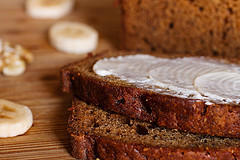Counting calories is a daily chore that all dieters must face, and it may sometimes seem like it is taking over your life (or at least your meals). These helpful tips from the USDA can help you to manage your meals, keep your calories under control, and do it all while still enjoying the food you eat. Here are some of the tips:
- Even if you carefully count calories, it's easy to exceed your empty calorie allowance. Empty calories are calories that come from added sugars and solid fats, and they have no health benefits.
- When choosing proteins, choose only lean versions of beef or pork. A three-ounce portion of regular ground beef contains 64 empty calories, while a three-ounce portion of extra lean ground beef contains zero empty calories.
- Breads and pastries with added sugar or butter contain significantly more empty calories than those without. A regular piece of white bread contains zero empty calories and approximately 69 calories, but a glazed donut contains 170 empty calories out of its total 255 calories.
- Check the calories on the label before you consume any food, and make sure to eat only the recommended serving size listed on the label.


 Equal Housing Opportunity
Equal Housing Opportunity